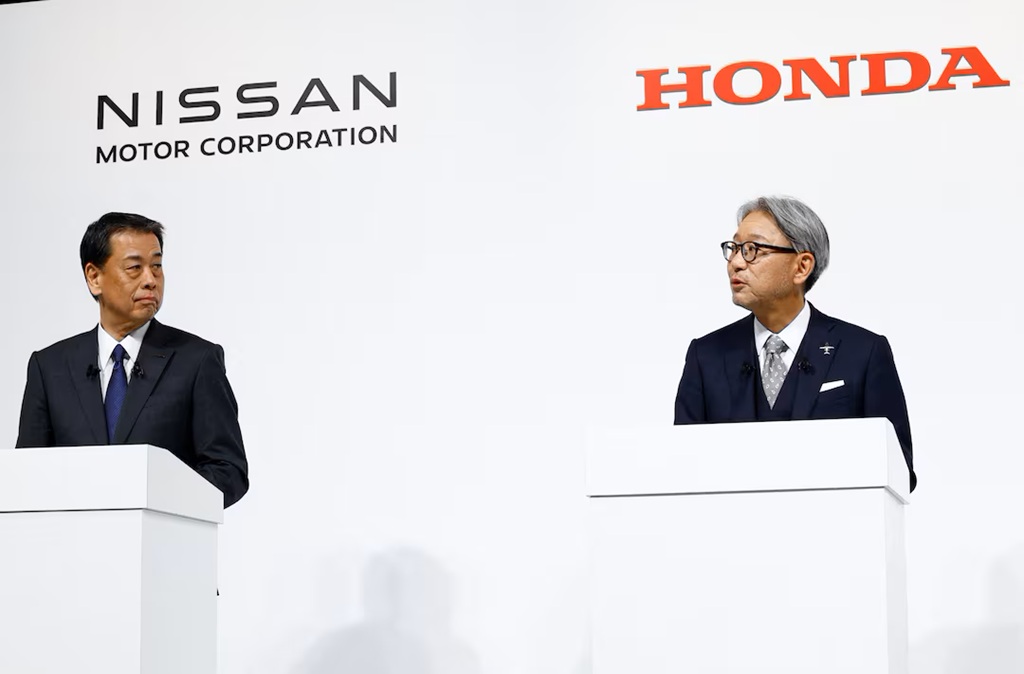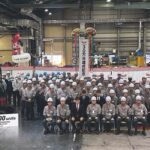Honda and Nissan have announced the end of their merger discussions, which could have created the third-largest carmaker globally by sales volume. The planned merger was seen as an attempt to compete with Tesla and Chinese automakers in the electric vehicle market while also offering relief to Nissan, which has faced financial challenges.
In a joint statement, the companies confirmed they had terminated the memorandum of understanding (MOU) signed in December to explore a business integration. “It’s deeply unfortunate that we couldn’t reach an agreement,” Honda CEO Toshihiro Mibe said during a press briefing.
Mr Mibe had previously denied that the merger would have been a bailout for Nissan, which has been struggling after announcing massive layoffs and reporting a 93% drop in net profit for the first half of the year.
Adding to its difficulties, Nissan reported on Thursday that it now expects an annual loss of $518 million due to declining sales.
Reports from Japanese media suggest the talks fell apart when Honda proposed making Nissan a subsidiary, instead of moving forward with the original plan of creating a joint holding company.
Honda explained that under a joint structure, decision-making could be slower during critical moments. Nissan CEO Makoto Uchida acknowledged this but expressed concerns about losing the company’s autonomy and not fully realizing Nissan’s potential under Honda’s proposed structure.
Despite the failed merger, both automakers plan to maintain their strategic partnership, which also includes Mitsubishi Motors. This collaboration aims to strengthen their positions in the electric and smart vehicle markets.
Renault Backs Nissan
In the joint statement, the companies said they will continue to work together to create value and enhance competitiveness without merging. The news of the cancelled talks is not expected to affect the financial results of either company.
French automaker Renault, which owns 35% of Nissan, expressed support for Nissan’s decision to focus on its turnaround strategy. Renault also reiterated its commitment to supporting Nissan’s future projects.
Meanwhile, Foxconn, the Taiwanese tech company, has shown interest in potentially acquiring Renault’s stake in Nissan, following earlier reports of its approach.
Nissan shared its projection of an 80 billion yen ($520 million) net loss for the fiscal year ending in March. This compares to a profit of 426.6 billion yen the previous year.
Honda, on the other hand, reported a net profit of 805.3 billion yen for the nine months ending in December, a 7.4% decrease from the previous year, largely due to weaker sales in China. Despite this, the company’s overall sales rose by 8.9% to 16.3 trillion yen.
Honda revised its full-year sales forecast slightly upward to 21.6 trillion yen but kept its profit estimates unchanged at 1.42 trillion yen for operating profit and 950 billion yen for net profit.
Nissan Makes Cuts
Nissan has revealed significant cost-cutting plans to tackle its financial struggles, which include shutting down at least three factories.
The company shared its quarterly financial results, confirming that a potential merger with Honda has been shelved, a move many believed could have helped Nissan.
The automaker aims to save around 400 billion Yen ($4.14 billion) by the 2026 fiscal year through these measures.
Nissan’s operating profit dropped sharply, falling from 478.4 billion Yen ($4.69 billion) between April and December 2023 to just 64 billion Yen ($663 million) for the same period in 2024. Net income also declined by 320.2 billion Yen ($3.3 billion), reaching only 5.1 billion Yen ($52.8 million).
To meet its targets, Nissan plans to cut 2500 “indirect” jobs globally and save 100 billion Yen by consolidating production lines, adjusting work shifts, and reallocating roles. The initial changes will affect three plants starting in Q1 FY25 (April–June).
These closures include two U.S. factories—Canton and Smyrna—as well as one of two production lines in Thailand.
Automotive News reported that CEO Makoto Uchida confirmed the closure of the Thailand facility but didn’t specify which U.S. plants will shut down. While Nissan considers two production lines in its Thailand factory as separate facilities, only one line will be affected.
The Thailand line set for closure handles the production of the Almera and Kicks. Meanwhile, the second line, which produces the Navara and Terra, will remain operational. Nissan Australia also stated that the Navara production line, known as Plant 2, won’t be shut down, but manufacturing for the Almera and Kicks (at Plant 1) will be merged with the Navara and Terra operations.
In the U.S., the Canton and Smyrna plants will reduce shift patterns to lower output. While no vehicles sold in Australia come from the Canton facility, the Pathfinder, which is built at Smyrna, is sold there.
Last week, Andrew Humberstone, Nissan Oceania’s Managing Director, hinted that the Pathfinder’s future in Australia is uncertain due to poor sales. Reduced production at the Smyrna plant could accelerate the model’s discontinuation in the region.
Previously, Nissan announced plans to cut 9000 jobs globally, with 6500 of those reductions now confirmed to come from manufacturing roles.
The company also intends to scale down global production capacity by 20%, reducing output from five million vehicles to four million by April 2026.








